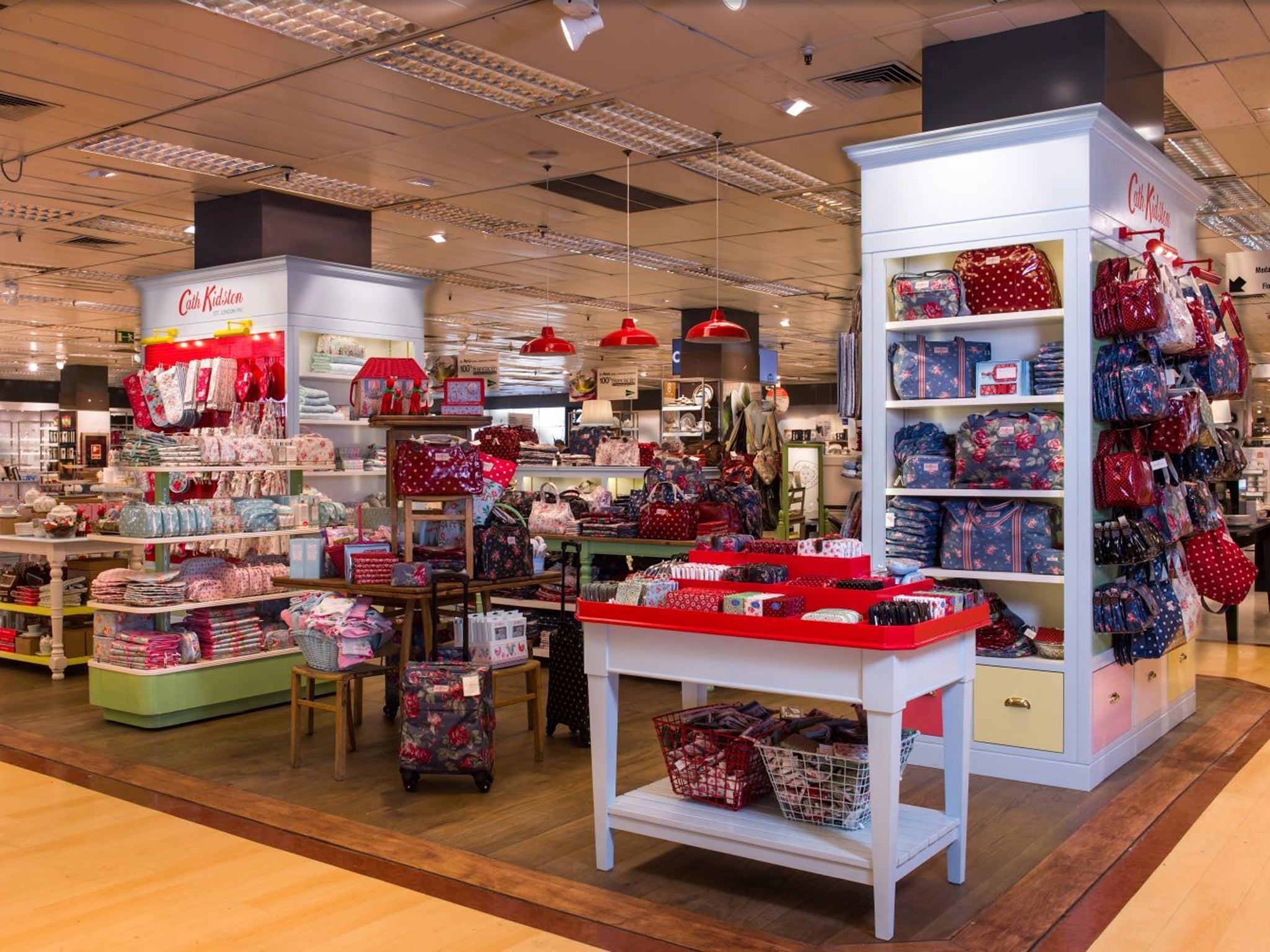Bags of money: Why the world just can’t get enough of Cath Kidston’s bright ideas
Covet it or cringe at the thought of it, it’s Britain’s most unstoppable brand

Your support helps us to tell the story
From reproductive rights to climate change to Big Tech, The Independent is on the ground when the story is developing. Whether it's investigating the financials of Elon Musk's pro-Trump PAC or producing our latest documentary, 'The A Word', which shines a light on the American women fighting for reproductive rights, we know how important it is to parse out the facts from the messaging.
At such a critical moment in US history, we need reporters on the ground. Your donation allows us to keep sending journalists to speak to both sides of the story.
The Independent is trusted by Americans across the entire political spectrum. And unlike many other quality news outlets, we choose not to lock Americans out of our reporting and analysis with paywalls. We believe quality journalism should be available to everyone, paid for by those who can afford it.
Your support makes all the difference.Cath Kidston has acknowledged the contrasting reactions her eponymous brand of floralware inspires. Appearing on Radio 4’s Desert Island Discs in 2011, the head of a blossoming global empire of twee said: “People either love it and want a little bit of it very much, or want to stab us.”
If success is keeping the haters at arm’s length, it was reflected yesterday in the chain’s latest annual sales figures. Twenty years after Kidston saw business potential in her home-made ironing board cover, she is now shifting £105m of brightly coloured bags, mugs, notepads and cake stands.
British sales at Cath Kidston rose 21 per cent in the year to March. The UK now has more than 60 outlets and a London flagship is due to open on Piccadilly before Christmas.
But the figures also reveal overseas sales rising 53 per cent, driven by huge demand in Asia. China’s middle-class crave British heritage, however contrived, and can’t get enough of Burberry and floral trailblazer Laura Ashley. Cath Kidston will open a second store in Shanghai later this year, to add to its other 30 outlets in China, Hong Kong, South Korea, Thailand and Taiwan. Japan has a further 32 stores.
Overseas desire was evident yesterday at the concession in Harrod’s, which opened on Friday. Sam and Amal, teenage sisters on holiday from Saudi Arabia, had spent £77.90 on a bag, towel and hand cream, all decorated with Kidston’s trademark flowers. “Normally we have to order online,” Amal said. Asked why they liked the store, the girls added: “It’s just British. You can’t find this elsewhere.”
Kidston, who’s 54, has become as aware of her own heritage as any latent fondness for granny’s teapot. Among the most prominent products at Harrod’s is her own book, Coming Up Roses: The Story of a Growing Business, which was published in April to mark the 20th anniversary of the opening of her “glorified junk shop” in Holland Park. The book is no rags-to-riches tale, however – Kidston grew up in a large house in Hampshire, and is the granddaughter of Glen Kidston, a racing driver and hunter. Kidston’s uncle is Charles Henry Allsopp, the 6th Baron Hindlip and father of the TV presenter Kirstie Allsopp. As a teenager Catherine Kidston worked for society interior designer Nicky Haslam before setting up her own business, at one time working for the record producer Hugh Padgham, whom she later married.
After surviving cancer, which had claimed her parents early, she started to design products inspired by the rural idyll of her youth.
The brand became a cult success and soon flourished, despite her early doubts. “I remember feeling I’d really overstepped the mark when I opened my second shop – thinking, that’s probably going a stage too far,” she told Radio 4.
In 2010, Kidston sold a majority share in her business to a US private equity firm, making a reported £30m, although she still holds a 23 per cent stake and remains creative director. She lives in the Cotswolds and Chiswick with Padgham and a step-daughter.
Under its chief executive Kenny Wilson, Cath Kidston the chain hides a canny business sense behind its cheery exterior. Lucrative collaborations have increased appeal beyond the brand’s ultra middle-class origins, and also among younger consumers. Kidston has slapped her name and style on Roberts radios, Millets tents and Nokia mobile phones. In 2008 she designed charity shopping bags made from plastic bottles for Tesco.
Outside Britain, franchised stores have minimised the initial investment required from the company’s HQ in St Neots in Cambridgeshire. The chain then succeeds by offering a sense of luxury, while preserving one of relative affordability in Britain. “In China, its cachet means people pay a premium,” Neil Saunders, a retail analyst, explains. “But it has not done so at the expense of mass market appeal in Britain. It’s a very strong position.” A Burberry mac, he adds, is fiercely expensive anywhere. A Cath Kidston handbag that is equally desirable to foreign eyes? Not so much.
While often compared to Laura Ashley, Cath Kidston “doesn’t have the same baggage”, Saunders adds. “It has managed to be seen as cool as well as traditional. It’s like the Laura Ashley of the Eighties but smarter.”
Wilson, too, concedes Kidston will never be universally loved. “We don’t try to be divisive,” he said. “We try to say, here’s our brand and this what it stands for.” As the haters circle, the challenge for Kidston, Saunders says is to: “Keep the brand fresh and interesting. The danger is that it becomes ubiquitous, or fashions move on. It has to keep reinventing without seeming to.”
In numbers
£105m Cath Kidston total sales (year to March 2013)
53% increase in international sales
62 Outlets across Asia
Join our commenting forum
Join thought-provoking conversations, follow other Independent readers and see their replies
Comments